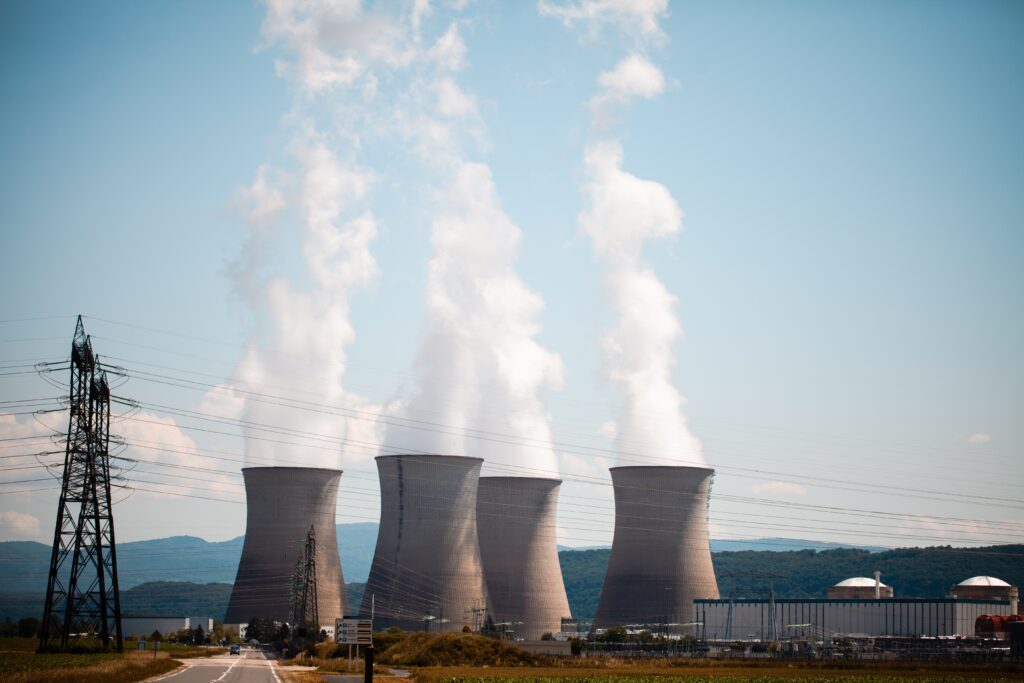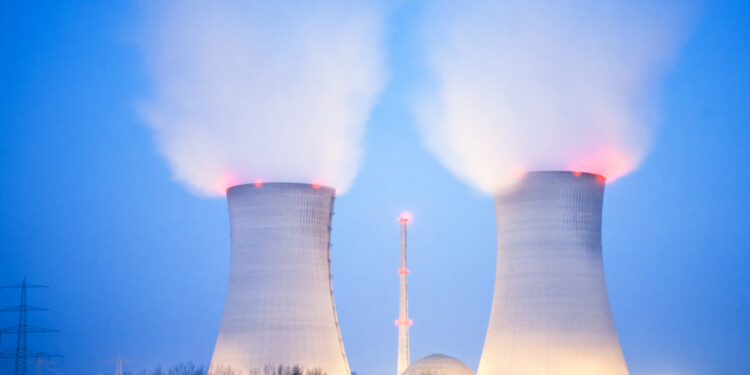Lightbridge Corporation (NASDAQ:LTBR) is a nuclear fuel development company focused on creating advanced reactor fuel technologies intended to enhance the safety, performance, and efficiency of existing and next-generation nuclear power plants. Founded in 1992 and originally known as Thorium Power, the company was established with the goal of developing innovative nuclear fuel based on thorium, a fertile material considered safer and more proliferation-resistant than traditional uranium-based fuels. Over time, the company shifted its focus toward the development of proprietary metallic fuel rod technology designed to significantly increase power output, improve thermal conductivity, and reduce operating temperatures in light water reactors, which make up the vast majority of nuclear reactors in operation worldwide. In 2009, the company rebranded as Lightbridge Corporation to reflect its strategic pivot toward commercialization of its fuel technology aimed at transforming the nuclear energy industry.
Headquartered in Reston, Virginia, Lightbridge operates at the intersection of energy innovation and national energy security, positioning itself as a potential key contributor to the future of carbon-free baseload power. With growing global interest in nuclear power as a solution to climate change and energy independence challenges, Lightbridge’s mission is to deliver fuel solutions that can extend reactor lifespans, enhance core performance, and reduce fuel cycle costs. The company collaborates with national laboratories, international research institutions, and regulatory bodies to advance its fuel toward regulatory approval and commercial deployment. Although Lightbridge does not currently generate commercial revenue from fuel sales and remains in the development stage, it continues to pursue strategic partnerships to test and validate its fuel designs in operational reactor environments.
As the nuclear industry faces increasing pressure to modernize and adapt to emerging energy demands, Lightbridge aims to play a central role in enabling the next generation of safer, more efficient nuclear reactors. Its advanced metallic fuel technology is designed to be compatible with both new and existing reactors, offering utilities the potential to increase power output without constructing new power plants. By focusing on innovation that aligns with global decarbonization goals, Lightbridge has positioned itself as a niche developer within the nuclear energy supply chain, aspiring to become a leading provider of advanced nuclear fuel for the growing clean energy economy.
Lightbridge’s Sell-Off Signals Investor Doubt in Commercial Viability
Lightbridge Corporation is increasingly showing signs of investor skepticism as the company’s stock plummeted by over 10.1 percent during a recent trading session, falling to $23.73 with trading volume down 37 percent from average levels. The lack of sustained investor interest, combined with the drop from a prior close of $26.41, signals not just volatility—but a rising concern that Lightbridge’s long-term commercialization prospects may be far weaker than the market narrative suggests. Despite being promoted as a next-generation nuclear fuel innovator, Lightbridge is still a pre-revenue company with no commercial fuel production, limited tangible progress toward commercialization, and a business model entirely dependent on external funding and future licensing success. The company operates in an industry where timelines can stretch over decades, and any delay in regulatory approval or partner adoption could derail investor expectations.
Analyst Sentiment and Ratings Highlight Deep Bearishness
While some speculative investors attempted to ride the nuclear energy momentum, the analyst community has taken a sharply negative stance. Weiss Ratings reaffirmed a “sell (d-)” rating, and based on MarketBeat data, Lightbridge currently carries a full consensus rating of “Sell.” This is a clear indication that professional analysts do not believe the stock is supported by its fundamentals or near-term catalysts. With a market cap of approximately $607 million and a price-to-earnings ratio of -28.23, Lightbridge is trading based on hope rather than earnings. The company reported a quarterly loss of $0.16 per share in its most recent earnings announcement, continuing a trend of net losses that suggest operational expenses and R&D costs will require ongoing equity dilution. The longer Lightbridge stays in the development phase without a clear commercialization pathway, the more likely it becomes that additional capital raises will dilute existing shareholders.

CHECK THIS OUT: NioCorp (NB)’s $1.14B Elk Creek Project Set to Transform U.S. Critical Minerals Supply and Endeavour (EXK) Poised to Double Output With Kolpa and Terronera Expansion.
Insider Selling Raises Red Flags on Management Confidence
One of the most alarming signals for retail investors is the significant insider selling occurring at the company’s highest levels. CEO Seth Grae sold 32,296 shares valued at $906,548.72, reducing his personal ownership by 4.11 percent. In addition, EVP Andrey Mushakov sold over 25,000 shares, marking a 5.96 percent reduction in his holdings. Overall, insiders have offloaded over 125,897 shares worth nearly $3 million in the last quarter. While insiders often sell for personal financial planning, such heavy selling during a period of stock price weakness suggests a lack of confidence in near-term upside. If those closest to the company’s strategic developments are reducing exposure, outside investors should take note. Insiders currently own only about 6.5 percent of the stock, a relatively small percentage for a company at this developmental stage and a sign that internal stakeholders may not be fully aligned with long-term shareholder interests.
Institutional Participation Remains Weak and Highly Speculative
Institutional investors hold just 9.14 percent of Lightbridge’s shares, with most recent inflows coming from small speculative positions rather than conviction buys from major asset managers. Recent increases included minor purchases by SBI Securities Co. Ltd. and Ameritas Investment Partners Inc., each owning holdings worth less than $50,000. Legal & General Group Plc and Farther Finance Advisors LLC also added minimal stakes. These allocations reflect opportunistic speculation rather than long-term investment conviction. In contrast, large-scale institutional buying—typically a signal of strong underlying confidence—is noticeably absent. The institutional ownership gap further underscores the belief among sophisticated investors that Lightbridge’s commercialization timeline is too uncertain and its valuation too inflated for a company with zero commercial revenue.
Fundamental Risk: Commercialization Delays and No Revenue Stream
Lightbridge’s core business revolves around the development of advanced metallic nuclear fuel technology that promises safer, more efficient reactor performance. However, this technology remains years away from commercial deployment, and the regulatory environment in the nuclear sector is notoriously slow. The company has yet to demonstrate large-scale reactor testing or secure binding long-term contracts with utilities. Its partnerships, such as those with Oklo, remain early-stage and lack revenue-generating commitments. Without commercial validation or a production-ready fuel cycle, Lightbridge faces substantial risk that its technology could be surpassed by competing nuclear innovations or new energy alternatives before ever reaching market.
Valuation Based on Speculation Rather Than Earnings Support
The stock’s valuation is disconnected from its financials, trading purely on speculative momentum rather than earnings potential. With a negative P/E ratio and no clear timeline for revenue generation, Lightbridge functions more like a venture-stage startup listed on a public exchange. While its intellectual property and technology platform may offer long-term promise, investors must recognize that the company is currently losing money every quarter and will likely require ongoing capital infusions that dilute shareholder value. As investor enthusiasm for speculative clean energy plays cools, Lightbridge could face significant valuation compression.
Conclusion: Lightbridge Shows High Risk, Weak Fundamentals, and Eroding Confidence
Between the double-digit stock drop, persistent Sell ratings, insider selling, minimal institutional support, ongoing operating losses, and an unclear commercialization timeline, Lightbridge represents a highly speculative investment with substantial downside risk. While it is positioned within the attractive narrative of nuclear innovation, the lack of near-term revenue, reliance on external funding, and signs of eroding insider confidence make it vulnerable to continued price declines. Unless Lightbridge can demonstrate meaningful commercial milestones, investors may find far better opportunities in nuclear companies that are already generating revenue and deploying real-world technology.
CHECK THIS OUT: NioCorp (NB)’s $1.14B Elk Creek Project Set to Transform U.S. Critical Minerals Supply and Endeavour (EXK) Poised to Double Output With Kolpa and Terronera Expansion.






